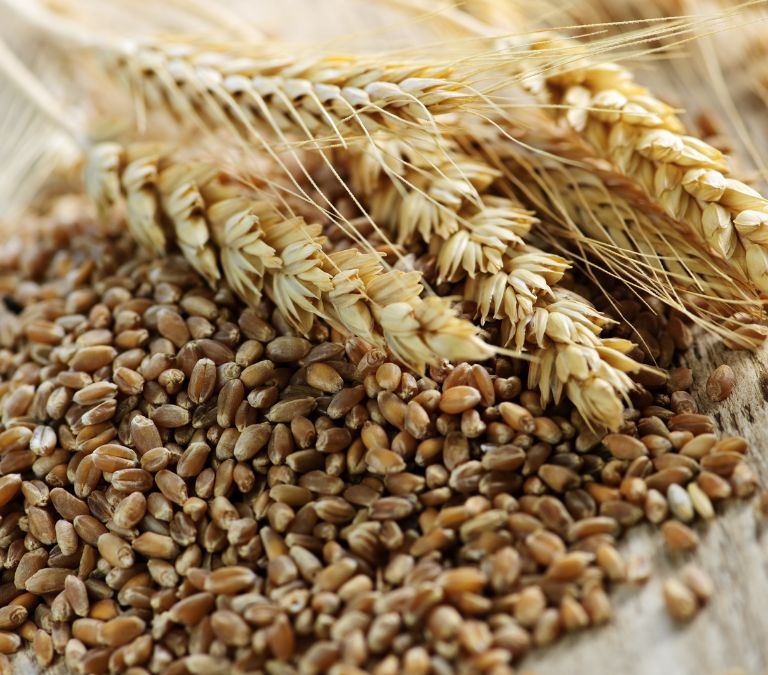There is evidence to suggest a connection between menopause and cardiovascular disease. When a woman’s menopause is getting closer, she will experience a discernible drop in her estrogen levels. Estrogen contributes to keeping relaxed, open blood arteries. If estrogen levels drop, cholesterol may begin to build up on the arterial walls of the blood vessels.
A buildup in the blood vessels leading to the heart or brain may increase the risk of cardiovascular disease. According to research, heart disease claims most women’s lives more than any other cause. Once they reach the age of 50, the approximate age at which women begin to experience menopause naturally, they are at a greatly increased risk of developing cardiovascular disease.
The beginning of cardiovascular issues is not directly attributable to menopause. A sedentary lifestyle and gaining excess fat can affect the amounts of circulating estrogen in the body.
Therefore, women must care for their hearts by maintaining a nutritious diet and engaging in regular physical activity. A balanced diet can help prevent or manage several disorders, including cardiovascular problems, which can appear during and after menopause. Participating in regular physical activity can go a long way toward ensuring a healthy heart.
Top 15 Healthy Foods
The foods we eat can influence every aspect of heart disease, including blood pressure, inflammation, cholesterol levels, and triglyceride levels.
You can help maintain a healthy heart and lower your risk of heart disease by eating a diet that is both nutrient-dense and well-balanced and includes foods that are good for the heart.
During menopause, you can include the following foods in a healthy diet to reduce the risk of developing heart disease.
- Whole grain
- Food rich in fiber
- Legumes and beans
- Vegetables
- Fruits
- Fish
- Folate-rich foods
- Soy
- Food low in trans fat
- Foods rich in iron
- Nuts and seeds
- Dairy products
- Food rich in minerals
- Skinless poultry and lean animal proteins
- Pastured eggs

Whole grain: they are healthier because they are made up of the entire grain kernel, which includes the bran, the germ, and the endosperm. Whole grain foods contain more fibers, vitamins, and minerals, which are good for the heart.
These fibers minimize low-density lipoproteins (LDL), reducing heart disease onset. Some examples are oatmeal, popcorn, brown rice, millet, and barley.
Food rich in fiber: If a product includes 5 grams of fiber per serving, it is an excellent source of fiber. Studies show that women who are above 50 years should consume about 21 grams of fiber each day. Fiber is a type of carbohydrate. What differentiates fiber from other carbohydrates is that the body cannot digest it. Meaning it goes through you undigested.
There are two types: soluble and insoluble. Examples of soluble fibers include barley, oats, nuts, and beans, while the insoluble types include wheat cereals, whole grains, vegetables like carrots, and others. Heart health has been connected with both varieties.
Since fiber can lower blood pressure and cholesterol level, it is thought to play a protective function in preventing heart disease and inflammation. It also can make you feel full, encouraging you to eat less and possibly lose weight.
Therefore, increased dietary fiber consumption, particularly cereal, may lower one’s chances of dying from all malignancies and cardiovascular diseases, thus prolonging one’s life.
Legumes and beans: These fruits or seeds of the Fabaceae plant family include lentils, peas, and chickpeas. They are widely consumed and rich in fiber, vital vitamins, and minerals.
They are also excellent vegetarian protein sources. A diet rich in beans and legumes has been associated with lowering the incidence of obesity, blood pressure, diabetes, cholesterol, blood sugar, heart diseases, and stroke while it boosts gut bacteria.
Vegetables: The abundance of vitamins, minerals, and antioxidants in leafy green vegetables is widely recognized. Examples of this include spinach, broccoli, and kale.
When we eat green vegetables, the soluble fiber in the plant gets sticky and clings to the extra cholesterol, which helps the body get rid of it, thus reducing it within the body. This action contributes to the heart’s health since a buildup of cholesterol obstructs arteries and raises the risk of cardiovascular disease over time.
A good example is a broccoli. Broccoli contains vitamins C and E. Both are excellent antioxidant vitamins. Foods rich in antioxidants help lower the risk of cardiovascular disease by thwarting free radicals, which cause cell damage when ingested in their vegetable form.
Free radicals can react with the cholesterol in the arteries, leading to serious heart problems. Antioxidants prevent such reactions from happening, thus protecting you from cardiovascular diseases.
Fruits: They can improve heart health. It is because fruits are full of nutrients that can help you lose weight, lower blood pressure, and lower your cholesterol, which is beneficial for your overall heart health. Additionally, persons who consume more fruits have a lower risk of developing high blood pressure since fruits are a great source of potassium and fiber.
And it is known that a higher potassium and fiber intake lowers blood pressure and even prevents it. Examples of fruits that can help lower the risk of cardiovascular diseases include bananas, grapefruit, berries, and apples.
For example, berries contain essential nutrients crucial for maintaining heart health. They are rich in antioxidants that help protect the heart against oxidative stress and inflammation, which have been implicated in developing heart disease.
Fish: Omega-3 fatty acids are in modest amounts in various sea foods. Most omega-3 fatty acids are found in fatty fish, which also appears to be best for heart health. Options for omega-3-rich fish include salmon, pacific mackerel, lake trout, cod, herring, and others.
The risk of developing heart disease can be decreased by eating two servings of fish every week. Fish contain omega-3 fatty acids, among other nutrients that may improve heart health and lower the risk of heart-related death.
Unsaturated fatty acids of the type omega-3 may lessen inflammation throughout the body. Blood vessel damage brought on by internal inflammation can result in heart disease and stroke. Omega-3 fatty acids could improve heart health by lowering triglyceride levels, slightly lowering blood pressure, preventing blood clots, lowering the risk of heart failure and stroke, and decreasing erratic heartbeat.
Folate-rich foods: This includes sunflower seeds, liver, peanuts, beans, lettuce, and citrus fruits. Water-soluble vitamin folate, often known as vitamin B9, performs a variety of vital bodily processes. Folic acids significantly reduce the blood level of amino acid homocysteine.
Homocysteine levels higher than usual have been linked with the risk of heart disease, hazardous blood clots, and artery stiffening. Consuming more folate can lower blood pressure and reduce the risk of developing cardiovascular disease, heart attack, and stroke.
Soy: Consuming soy (soybeans, soy flour) is a fantastic method to consume more plant protein as it offers more cardiovascular advantages, such as decreasing blood pressure.
Soy products are good for the heart and overall health because they are low in saturated fats and high in fiber, minerals, vitamins, and polyunsaturated fats. Diets low in saturated fats and cholesterol may lower the risk of heart disease. Also, polyunsaturated fats can lower cholesterol.
Food low in trans fat: Dietary fat is needed for good heart health as it provides energy and aids vitamin absorption. However, some fats may contribute to heart and stroke. Fat also contains many calories, resulting in weight gain or obesity.
Fat can be divided into two types: saturated and unsaturated fats.
Saturated fats are solids even at room temperature. Examples include butter, lard, yogurts, high-fat meals, and cheese. As a result of the tendency of saturated fats to increase blood levels of LDL cholesterol, they could increase the risk of developing a stroke, among other heart diseases, if taken regularly.
Unsaturated fats become liquid at room temperature and can be found in fish, vegetable oils, and nuts. Eating meals high in unsaturated rather than saturated fat improves blood cholesterol levels, lowering the risk of heart attack and stroke.
One kind, omega-3 fatty acids, seems to improve cholesterol levels, decrease blood clotting, decrease irregular heartbeats, and mildly lowers blood pressure.
There is no need to eliminate fat from one’s diet, but one has to be wise in his choice of fat type and quantity. Recall that fat contains many calories; therefore, you should not consume food high in saturated fat in addition to those high in healthy unsaturated fat.
Food rich in iron: Good iron sources include potatoes, spinach, and mushrooms. Red blood cells, a specialized type of blood cell that transport oxygen throughout the body, are made possible by iron. Lack of it can cause illness, infections, and problems with the heart and lungs.
A healthy diet for blood circulation, including food rich in iron, minimizes the risk of anemia and plays a critical role in heart health.
People with anemia may develop several issues, which include forcing the heart to pump blood each minute to reach the tissues with enough oxygen, potentially resulting in heart failure.
Therefore, consuming meals rich in iron is highly recommended for red blood cell levels and maintaining proper blood circulatory system function to ensure excellent health and avoid anemia.
Nuts and Seeds: Nuts reduce triglycerides and LDL cholesterol levels, which are important contributors to plaque development in the arteries. They can also improve the condition of the arteries lining, lower the inflammatory levels associated with heart disease, and decrease the chance of blood clots which can lower the chance of heart attack.
Most nuts and seeds contain some heart-healthy substances: unsaturated fats, omega-3 fatty acids, fiber, vitamin E, and plant sterols. Examples include almonds, wallnuts, Brazil nuts, and many others.

Dairy products: Low-fat dairy product consumption can reduce the risk of high blood pressure because consuming dairy milk may reduce cholesterol levels. An example of this is almond milk. They are good for the heart because unsweetened almond milk has no saturated fat. Additionally, it is milk made from plants and has no cholesterol.
Food rich in minerals: Minerals such as potassium, magnesium, and zinc can help lower blood pressure and reduce the risk of heart disease. Avocado is a good example of a fruit rich in potassium. Consuming this, especially during menopause, can boost heart health. Potassium reduces sodium concentration, which heightens blood pressure.
Skinless poultry and lean animal proteins: It is claimed that meat consumption is bad for the health because it is high in fat and cholesterol and is linked to coronary heart disease and elevated blood cholesterol levels.
However, skinless poultry and lean meats provide the body with essential minerals like iodine, iron, zinc, and vitamin B12, as well as protein necessary for growth and development. Consuming lean meats and poultry can assist an individual in maintaining a diet that is below the level of saturated fat suggested for them and reduce the likelihood that they will acquire chronic diseases.
Chickens without skin and beef with a lean content of at least 90 percent are foods you can consume to improve your health by lowering the risk of high cholesterol accumulation in the heart and blood vessels.
Pastured Eggs: Eggs from chickens kept on open pastures contain a substantially greater concentration of omega-3 fatty acids and are referred to as pastured eggs. Triglyceride levels in the blood, a well-known risk factor for cardiovascular disease, are lowered by omega-3 fatty acids. As a result, eating this variety of eggs raises high-density lipoprotein (HDL) levels, which assists in removing LDL from the arteries and positively contributes to the heart’s overall health.
Top 15 Exercises That Can Improve Cardiovascular Health During Menopause

Exercise is important for menopausal women. It has numerous advantages during and after menopause. Around menopause, women frequently experience muscle loss and abdominal fat increases.
Gaining weight during menopause can seriously harm health. Heart disease risk factors grow in excess rate as a consequence of this. These dangers can be reduced by regular exercise, which can help enhance the quality of life, help you reduce stress, and help you maintain a healthy weight.
Consider these menopause fitness suggestions.
Running: It lessens the strain on the heart. Runners often have a lower resting heart rate and consume more oxygen because their hearts are stronger. So, the heart pumps more blood with every beat, making the heart’s task easier.
Strength training: Regular strength can help you lose body fat, build stronger muscles, and burn calories more effectively, protecting the artery from the damage that high cholesterol and high blood pressure can cause. Try resistance tubing, weight machines, or hand weights. Choose a weight or resistance level that, after approximately twelve repetitions, will cause your muscles to hurt and feel fatigued. As your strength improves, progressively increase the weight or resistance you work with.
Stability and balance: Exercises that increase balance increase stability and can help prevent falls. Examples include brushing your teeth while standing on one leg.
Dancing: Exercise that involves dancing should not be all hard labor. Dance can keep you flexible and can help convert body fat to muscles. Different dancing styles may suit you. Examples include salsa, ballet, jazz, and ballroom.
The heart rate rises during dancing, supplying working muscles with more oxygen-rich blood. As the heart beats more quickly, more blood is sent to the lungs to take up oxygen and transport it to the tissues. The increase in this heart rate supports heart health and keeps muscles in shape.
Yoga is essential for the heart as the muscles become stronger and more toned if you practice Yoga. While practicing some Yoga, you can substantially raise your heart rate without losing the serenity that drops your blood pressure. By enhancing circulation and blood flow, Yoga improves heart health. It can also lower the heart rate, blood pressure, and cholesterol, reducing the risk of hypertension and heart disease.
Cycling: More can be accomplished with a bike. The risk of heart disease can be lowered by cycling. The heart rate is raised due to using the powerful leg muscles. The heart and circulation are stimulated and improved by regular cycling, lowering the risk of cardiovascular disorders during menopause. Cycling increases the heart muscle strength and decreases the resting pulse.
Walking: It could seem to be a straightforward task, however, walking, especially speed walking, is an effective way to strengthen the heart. Walking will raise your heart rate quickly and is less strenuous on the joints.
The heart is a powerful muscle exercised to maintain strength. The muscles will receive blood and oxygen from the heart when pumping. It will help keep the heart strong and healthy. You can stroll around lunchtime or on weekends for a longer distance.
Jogging: This is a quick and efficient exercise to raise the heart rate. To accomplish this, lightly hop from one foot to the other, swinging the arms side to side simultaneously. Jogging helps to decrease blood fat level as HDL level increases. It also helps to increase the rate of blood flow.
Stair climb: Going up and down the stairs repeatedly can be included in your workout. You can put the cardiovascular system and leg muscles under even more strain by ascending the steps two at a time and accelerating to a running pace.
For menopausal cardiac patients, stair climbing has considerable cardiovascular and muscle advantages. Stair climbing exercises, whether moderate or intense, have considerable positive effects on the heart.
Burpees: This is a challenging full-body exercise that stimulates heart rate. The body should be in the pushup position. To draw the knees to the chest and land in a squat, push off the balls of the feet. Jump out of the squat while elevating the hands, then gently land back in the squat. The hands are then repositioned, so they are beneath the shoulders and on the floor. The legs will spring back to return to the starting position.
Turning the trunk: The trunk rotation exercises the abdominal muscles and puts the strength of the heart to the test. To execute, stand with the elbows at the side with a heavy object positioned at the height of the chest. Then turn to one side, then the other, starting from the torso. Additionally, one can twist side to side while holding the arms at shoulder height.
Swimming: It is not simply for relaxing afternoons in the summer but can strengthen both the body and the heart. Swimmers have a resting heart rate which has the health benefit of reducing the risk of heart disease. Swimming also strengthens the heart and increases blood flow, which can help lower blood pressure. It improves the heart rate and blood pressure.
Jumping Jacks: This has cardiovascular advantages as it stabilizes the heart rate, improves blood flow throughout the body, regulates and maintains blood pressure, lowers harmful cholesterol levels, and shields the heart from a heart attack. During menopause, estrogen is lost, reducing the powerful muscle contraction, but jumping jacks compensate for the deficit.
Stretching: lowers blood pressure and relaxes arterial stiffness, increasing blood flow. If you have poor circulation and stiff arteries, you are at an elevated risk of heart attack or other cardiovascular events. In situations in which the heart and the muscles of the body, in general, have a greater demand for oxygen and nutrients, the arteries need to be able to dilate so that they can make room for the increase in blood flow. Consequently, stretching can help ease some of the related stiffness caused by this.
Tai chi is a form of exercise that originated in China and is based on martial arts. Because it incorporates both slow, deep breathing and rhythmic movements of the body, it is frequently referred to as “moving meditation.” This workout is great for the health of your mind and body, especially your heart.
Conclusion
Even though the heart starts to lose its functionality as menopause draws near and much later as a result of the reduction in estrogen levels, as a direct result of this, cholesterol can begin to build up on the arterial walls, which can initiate the development of several disorders related to the cardiovascular system. A careful commitment to the meals and exercises indicated in this article, which can improve cardiovascular health in menopausal women, will help reduce the effects of these changes.







